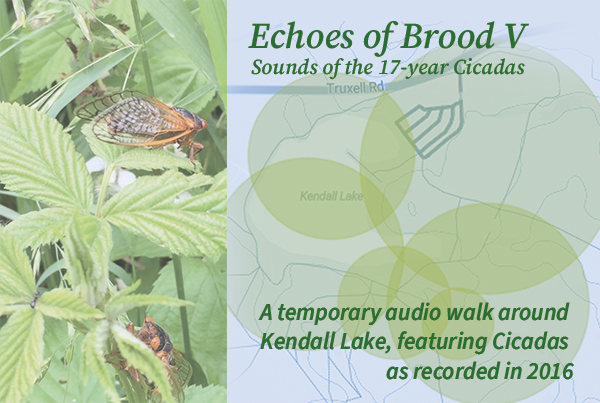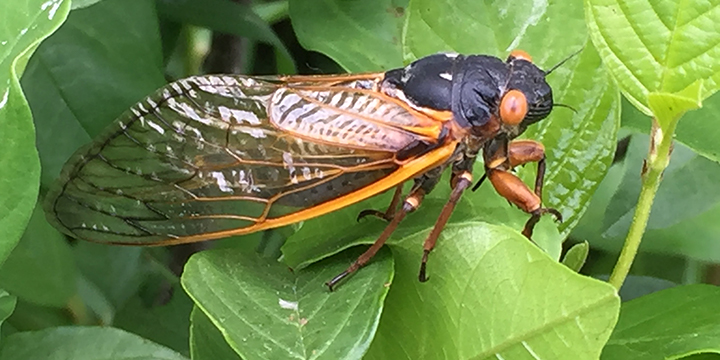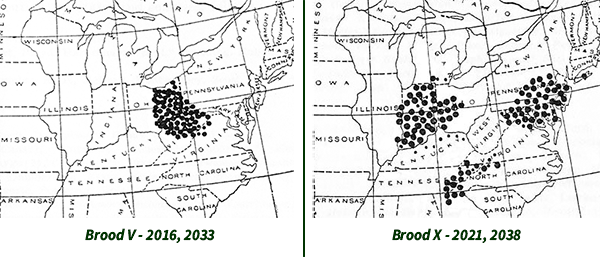
In 2021, the widespread emergence of the "Brood X" 17-year periodical Cicadas got a lot of media attention. There are 23 different periodical cicada "broods", which appear in different geographical territories each year – the most recent emergence of in my neighborhood (eastern Ohio) was Brood V in 2016, and they won’t be back here until 2033. Kendall Lake in Cuyahoga Valley National park was a real hotspot for Brood V, with Cicadas swarming the trees and filling the air with their clicking and buzzing calls.
The "Echoes of Brood V" project is a geo-located soundwalk which enables you to revisit that soundscape, via a freely downloadable phone app (Android or iPhone) called Echoes. With it, you can explore the Kendall Lake Trail and hear different Cicada sounds on your phone, based on your location. All sounds were recorded in CVNP in 2016.
To access the free soundwalk, simply
Be sure to explore the area in back of the lake, along the trees at the bottom of the hill, which was especially loud. You may notice the birds taking an interest in the sounds as well, perhaps hoping for a tasty snack!
Additional information about the SoundWalk can be found on the Echoes site: Cicada Sound Walk: "Echoes of Brood V"

Periodical cicadas appear in either 13 or 17 year cycles, in particular geographic areas that define "broods." All of the cicadas in a brood appear in the same year, but different broods are staggered. So our eastern Ohio brood V appeared in 2016, and will not appear again until 2033. Brood X is appearing in several areas in 2021 including Western Ohio, Indiana, and points south and east.

Both brood V and X include 3 species of cicada: M. septendecim, M. cassini, M. septendecula. Each of these species have unique sounds and song patterns. Their singing also varies depending on their activity.
Only the males sing. They often gather in trees and sing in unison (called "chorusing"), as a way of increasing their ability to attract females. The male abdomen is largely hollow and is used as a resonant chamber to amplify their sound. The female abdomen is where her eggs are stored.
Cicadas can chorus at extremely high volumes: 85 decibels is commonly reported, and we measured even louder in some areas of CVNP in 2016. For comparison, OSHA requires workplace monitoring starting at 90db.
Their large numbers are part of a survival strategy called "predator satiation." Basically, they appear in such vast quantities that predators can't possible eat all of them. They also appear at odd (13 or 17 year) intervals so they don’t coincide with predator population cycles which are more likely to be on even intervals.
Some additional resources for information about Periodic Cicadas: